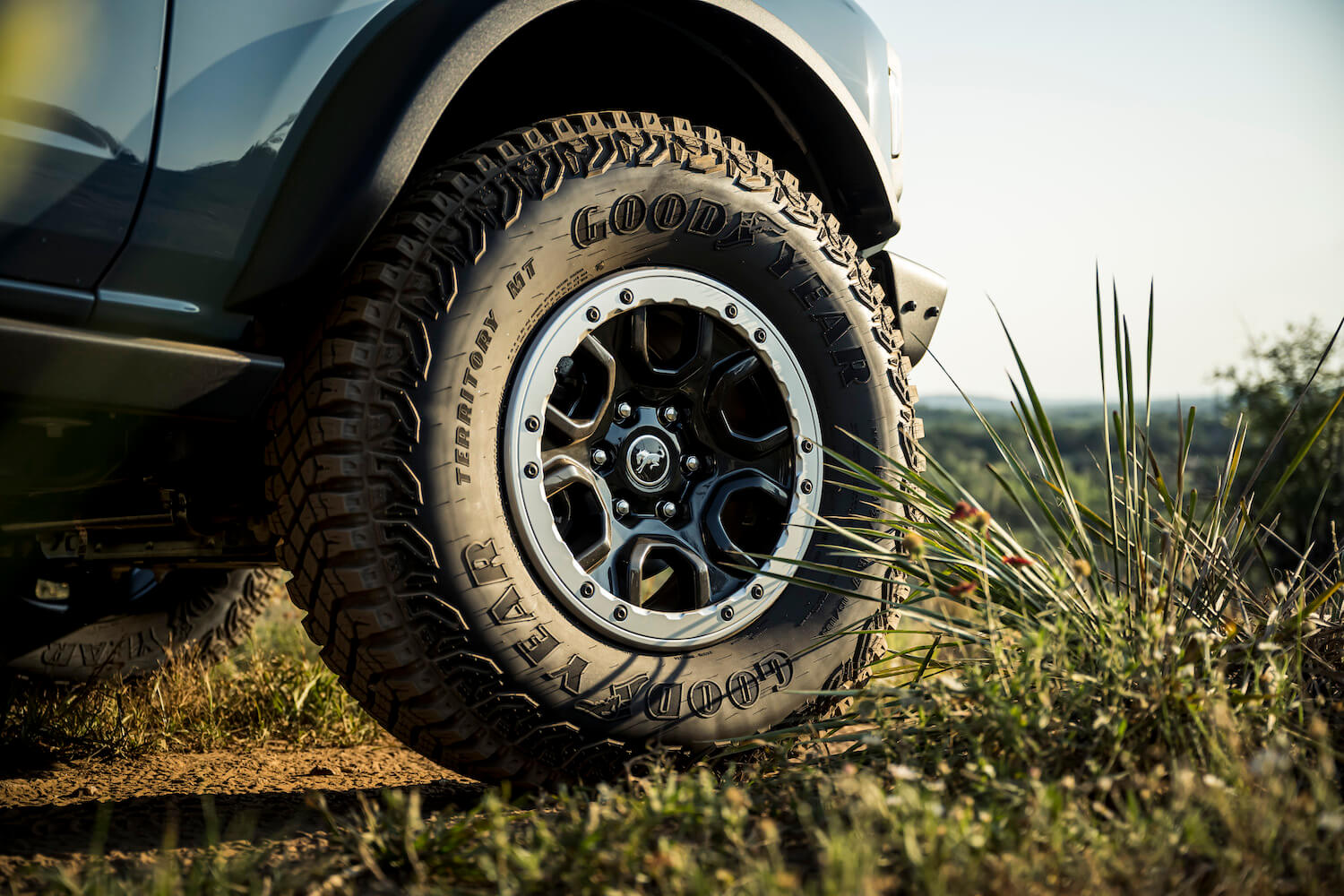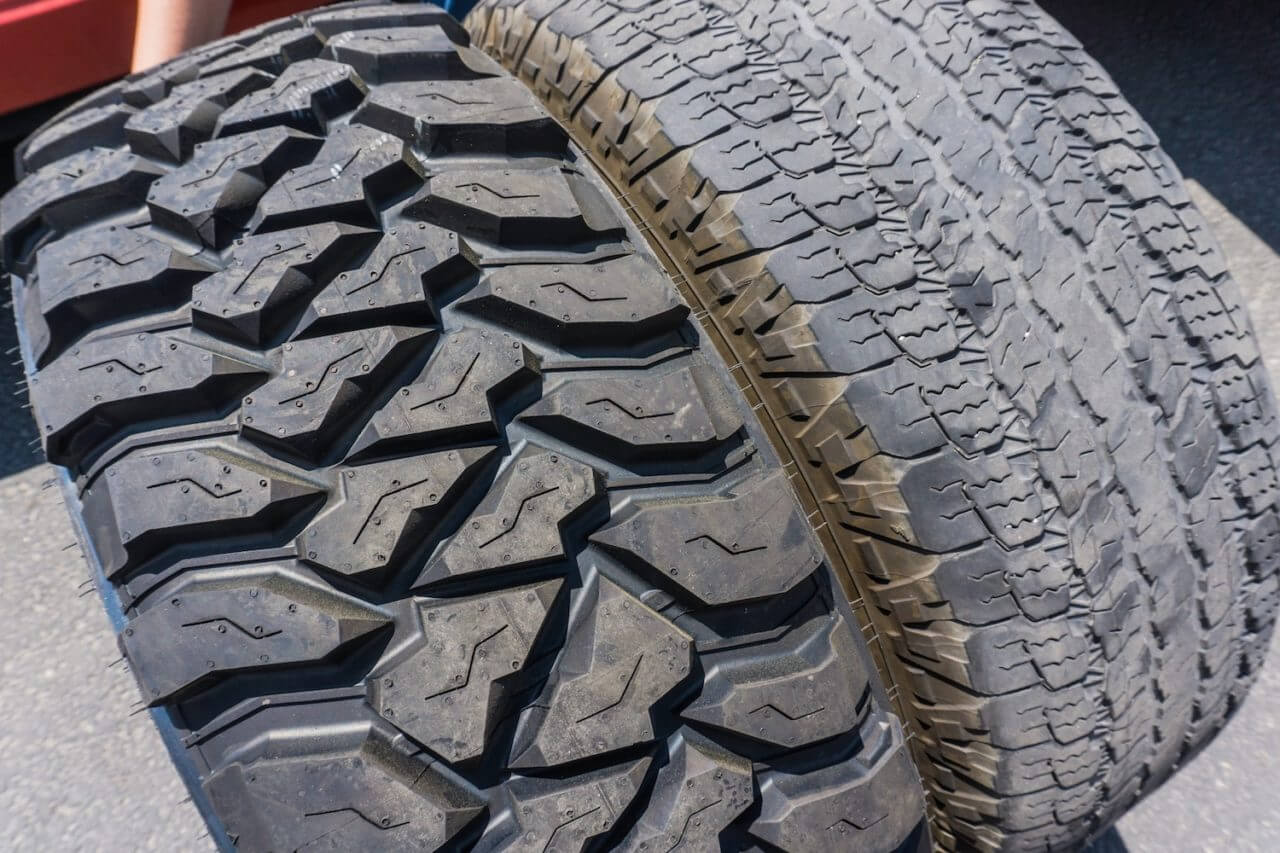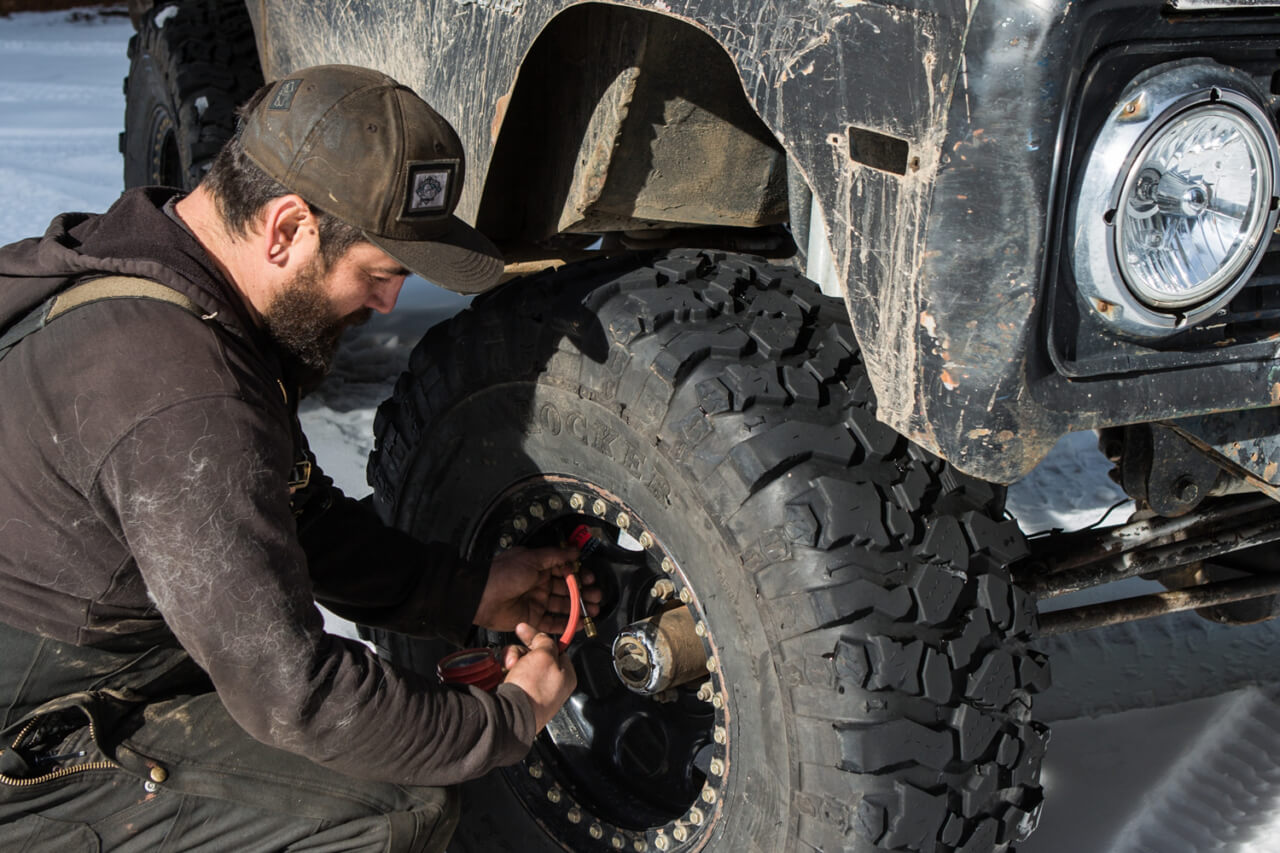
The only points of contact between your vehicle and the road are its tires. They need to have enough traction to properly accelerate, brake, and steer while maintaining control. A byproduct of the connection with the road is wear on the tread, which is why tires eventually need to be replaced under normal operating conditions.
But sometimes, tire wear isn’t consistent or normal. It can lead to handling issues, vibration, and noise. Premature tire wear adds to your cost of ownership and could be a safety issue.
These are the six types of uneven tire wear, what causes each one, and how to prevent it from happening.

Common Tire Wear Patterns
There are six common patterns of unusual tire wear you may notice, and each has a unique cause. Here’s how to identify the pattern and what contributes to it.
1. Toe Wear
Toe wear is a type of tire wear that is characterized by the inner or outer shoulder of the tire having more wear than the center tread section. To notice this pattern, look for a difference in wear between the outside and inside edges of the tire. The outside edge of the tire will be more worn down than the inside edge, which is a sign of toe wear.
Cause: Toe wear is caused by incorrect wheel alignment. This means that the wheels are pointing either inward or outward more than they should according to the manufacturer’s specs, causing the tires to scrub against the road. To fix this, you will need to have your wheel alignment checked and adjusted.
2. Camber Wear
Camber wear is another type of wear demonstrated by the tire being worn more on one side than the other. This type of wear is noticeable as the tire appears to be leaning inwards or outwards. While the tread appears straight, the inner tread is thicker than the outer tread or vice versa.
Cause: The cause of camber wear is incorrect camber angle, which is the angle at which the wheels are tilted inwards or outwards. This can be due to worn suspension components, which need to be replaced, or to incorrect alignment, which can be corrected by a front-end shop.
3. Center Wear
Center wear is also relatively common, and you’ll notice the center of the tire has more wear than the edges. It could be a smooth and flat spot in the middle of the tire, or with early detection, it could be found with small differences in tread depth measurements.
Cause: Overinflated tires or a car that is consistently driven straight without turning are the usual causes of center wear. To prevent it, make sure your tires are properly inflated and rotate your tires regularly to ensure even wear.
4. Edge Wear
Edge wear often gets mistaken for toe wear since they look somewhat similar, but the difference is that both shoulders have more wear than the center. The tire appears to be worn down along its sides while the middle section looks newer.
Cause: The cause of edge wear is almost always underinflated tires but occasionally it can be due to driving on bumpy roads that cause the tire to flex. To prevent edge wear, make sure your tires are properly inflated. If you’re the rare case caused by bad roads, choose tires that are designed to handle rough roads.
5. Patch Wear
If there are sections of the tire that have wear across the tread section and others that are normal, it’s called patch wear. It looks like segments of the tire have been scuffed away, and usually at inconsistent spots around the circumference.
Cause: While incorrect tire pressure is occasionally to blame, it’s almost always due to improperly balanced tires. As you drive, imbalanced tires bounce against the road, wearing the parts that apply more pressure to the surface than others. You’ll feel a vibration in the steering wheel too.
6. Cup Wear
Cupping wear looks like diagonal sections on its surface that have rough or worn tread. This type of wear can be hard to detect visually unless you’re looking at the correct angle or you run your hand over the tread to feel the differences. Most cupping wear has roughly equal distances of worn sections around the tire’s circumference.
Cause: The cause of cupping wear is usually worn-out suspension components. Parts like control arm bushings, ball joints, and tie rod ends are likely to have excessive play, letting the tire shimmy side to side, especially at higher speeds.

How to Prevent Uneven Tire Wear
Tires are expensive to replace, and premature or uneven tire wear often means you aren’t getting the expected life out of your tires. The best way to avoid the added expense of costly 4×4 tires on your truck or SUV is by preventing it from happening in the first place.
Here are some suggestions to help keep your tires in good shape:
-
Adjust your tire pressures often
When the weather has significant changes, the tire pressure will change too. Adjust the tire pressure anytime there are major temperature fluctuations, or at least once per month.
-
Get a routine alignment performed
Once a year, get your wheel alignment checked to make sure it’s within its normal specs. If it isn’t, get an alignment performed to help avoid toe and camber wear. It might even help detect early suspension problems.
-
Fix steering and suspension issues right away
A little wear in a ball joint or tie rod might not seem like a big deal, but it will be if it causes uneven wear on your new set of off-roading tires. Replace any worn or bent suspension parts right away to keep your tires in good shape.
Whether you need a shop to check your alignment, new tires, or suspension parts to get your truck back in spec, choose 4 Wheel Parts. You’ll find great deals on all the top name brands along with expert advice.



2